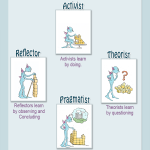
In 1986, Peter Honey and Alan Mumford, classified learners into four types. Vastly different in its approach from the VAK model that was first proposed in the 1920s by a group of psychologists and later reviewed and repurposed more recently…
Cognitive Dissonance: (Explanation, Illustration, and its Impact on Learning.) Understanding Cognitive Dissonance: I had first encountered this term when I was a student of management. The context was customer behavior, and the concept being discussed was Post-purchase Dissonance. To…
Conformity, Compliance, and Obedience (Explanation and Comparison with General and Training-Specific Illustrations.) If you are a trainer, you’ve seen them all – right there in your classroom. Accepting the existence of these behaviors, and understanding them could help you…
This is something that will continue to trouble me until my last day on dear Mother Earth’s bossom. Why do we glam them up? Why is it that we try to tediously work our fantastic vocabulary into writing statements that…
What is an Assessment Rubric? Before I explain this apparently bulky term, let us answer the following two questions. Question 1. What is 2 + 2 =? 52 4 -24 2 Question 2. Illustrate the foot-in-mouth disease with two examples…
Active Learning Active learning refers to the methods that engage or involve learner in the learning – thus, moving from the plain old lecture-based sessions to more interactive and collaborative ones. (Charles C. Bonwell and James A. Eison, 1991). Thus…